Container Designs Built to Last
You’ll save time and money if you don’t start from scratch every spring
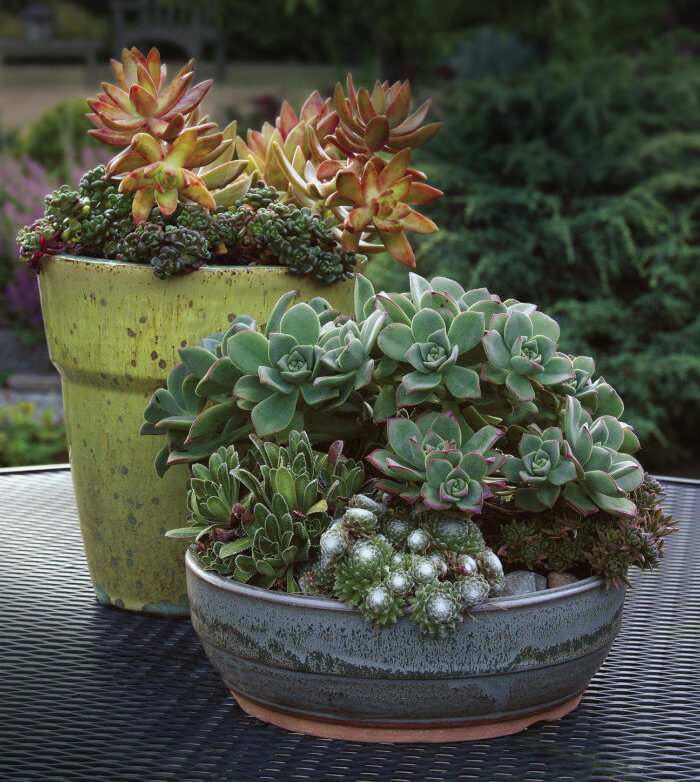
I started asking more from my container designs when my kids were still young. Three seasons of interest no longer seemed like enough return. I was tired of starting over every spring, sinking all that time and money into creating new designs. And tossing out loads of frostbitten annuals every fall felt wasteful. I wanted my designs to last—for years.
Filling my containers with perennials was just the beginning. Over time, I’ve refined several key practices for planting and maintaining my pots. By learning how to give plants a solid footing and manage root competition along the way, you can keep the same planting healthy for at least half a decade. (The oldest in my garden just turned seven.) If you follow these techniques, you’ll have an established planting to tweak next spring, instead of an empty pot.
Pick plants that are always on good behavior
Most potted plantings look shabby after just a few months because they were essentially set up to fail. You might get away with planting moisture-loving plants alongside Mediterranean natives in a planting bed, for instance, but it’s a lot harder to pull off in a pot. If you want a design to last, grouping plants with similar water, light, and soil requirements is a must.
When selecting plants, I like to start with the main focal point, such as a tree, shrub, or grass. Keep in mind that container designs that are at least two-thirds evergreen usually have more structure and better four-season interest. Dwarf trees and shrubs work best because they are compact, are slow growing, and easily lend themselves to pruning. Some of my favorite dwarf conifers are mugo pine (Pinus mugo and cvs., USDA Hardiness Zones 3–7) and hinoki cypress (Chamaecyparis obtusa and cvs., Zones 4–8; photo above). Well-suited broadleaf evergreen shrubs include pieris (Pieris japonica and cvs., Zones 6–8), mahonia (Mahonia spp. and cvs., Zones 5–10), and camellia (Camellia spp. and cvs., Zones 7–8). If your focal plant is deciduous, make sure it has multiseason interest; good examples include dwarf mophead hydrangea (Hydrangea macrophylla cvs., Zones 6–9) and Arctic Fire™ redtwig dogwood (Cornus stolonifera ‘Farrow’, Zones 3–7).
Next, select your perennials. Most perennials eventually smother their neighbors in a pot, but there are several that play nice, including heuchera (Heuchera spp. and cvs., Zones 3–8), sedum (Sedum spp. and cvs., Zones 3–11), and variegated grassy-leaved sweet flag (Acorus gramineus ‘Variegatus’, Zones 6–9). If you use grasses, be prepared to keep them inbounds; their aggressive root system can quickly fill a pot. As for annuals, they’re perfect for adding spots of color and making a design look seasonal.
Pot up your plants right, and keep their roots from competing
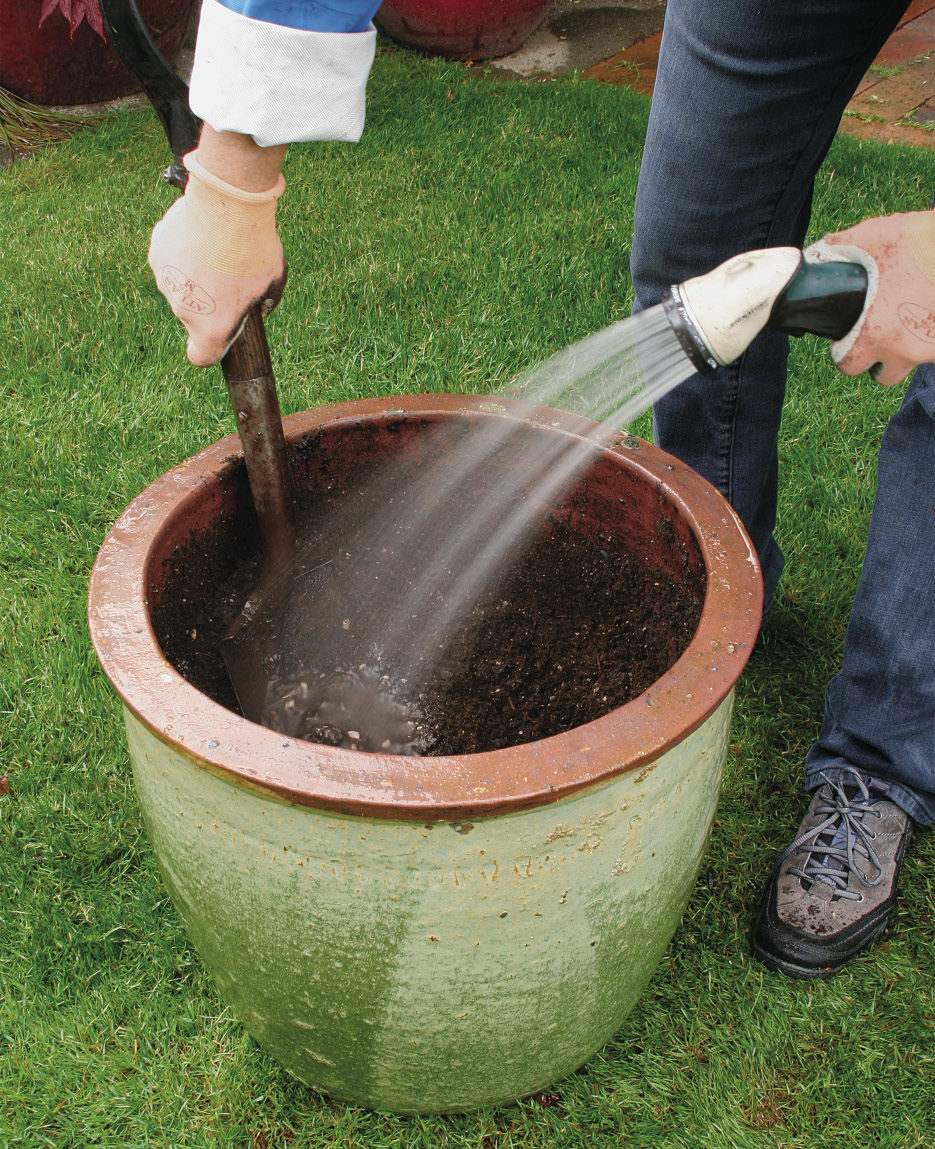
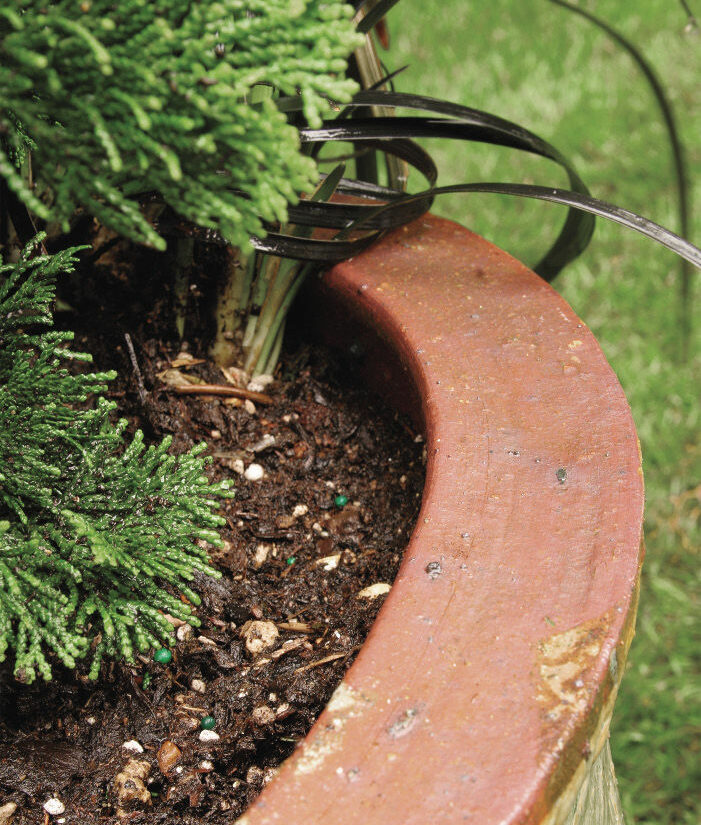
When longevity is the goal, the quality of your potting soil and how you use it becomes especially important. It’s worth a few extra dollars to buy high-quality planting soil. Opt for potting mixes that get their nutrients from compost, instead of synthetic fertilizer; too much nitrogen just leads to overcrowding in a pot. While filling your container, slowly moisten the mix with water so that it absorbs evenly (photo above). This practice prevents air pockets from developing around the root zone, which can pool with water and lead to root rot. Also, don’t fill the pot to the brim (photo right). Leaving a 1- to 2-inch space between the rim of the container and the soil’s surface lets water soak in gradually and prevents overflow. When watering your pots, do so slowly to prevent the soil from splashing out or settling unevenly.
Root competition is perhaps the most overlooked threat to potted plants.
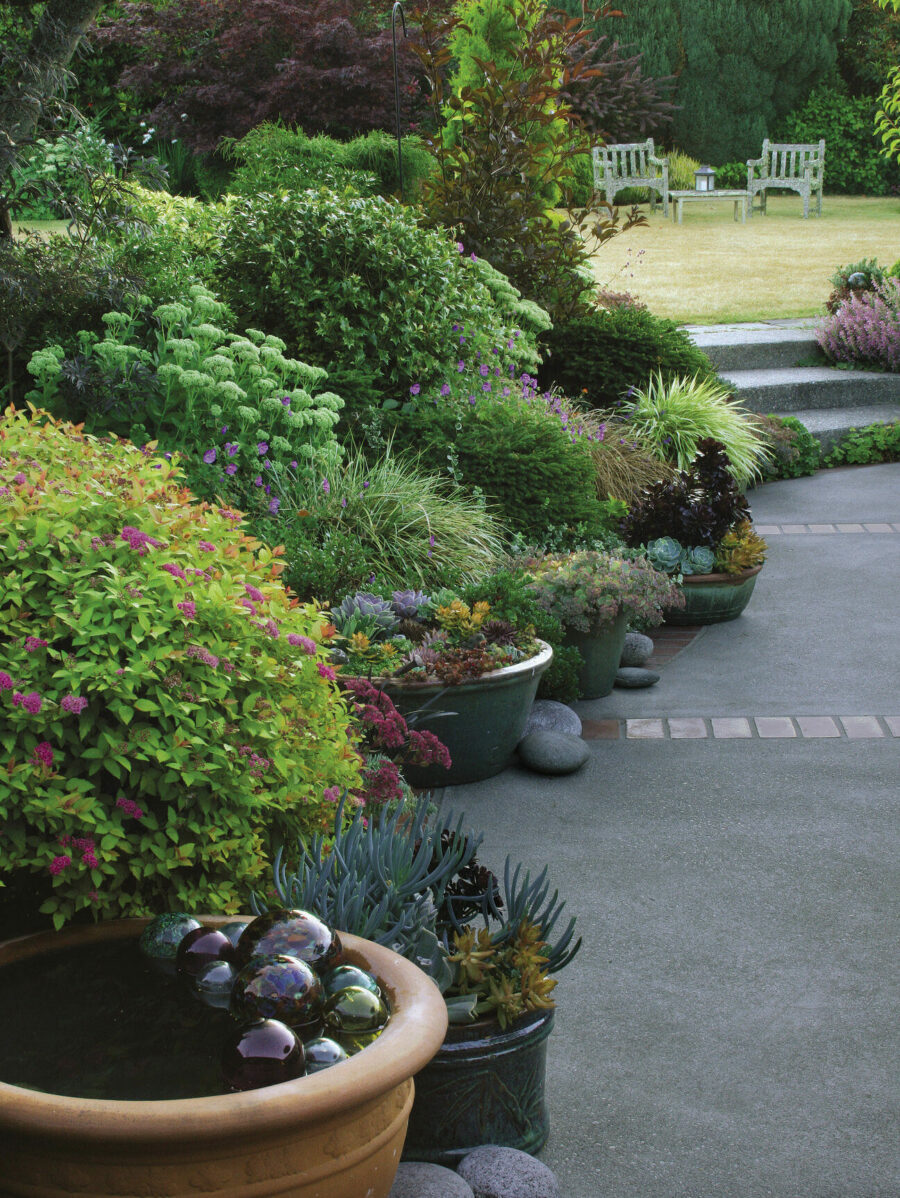
Root competition is perhaps the most overlooked threat to potted plants. To keep plants from choking each other, you’ll need to prune their roots. This practice revitalizes woody trees and shrubs, and it creates more space for companion plants. It’s even smart to occasionally root-prune perennials in a container. Most potted trees and shrubs need their roots pruned every two years, while grasses need their roots pruned every year.
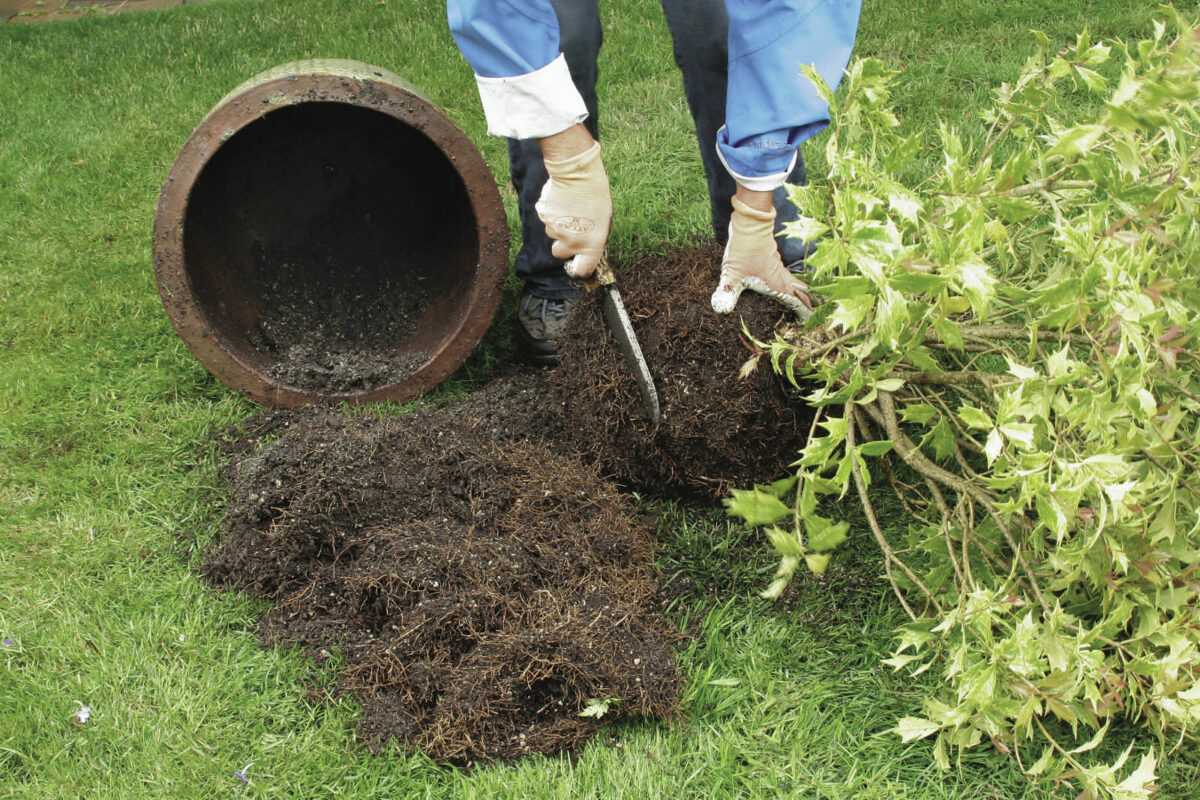

To prune roots, lay the container on its side and slide out the root ball of your dormant plant. Use a small root-pruning saw or hori-hori knife to tease out and trim back the roots, sheering off roughly a third of the root ball. Repot the plant using fresh potting soil.
I feed plants only when I first pot them up. A 5–5–5 organic fertilizer is perfect for jump-starting new transplants. But after the first season, feedings promote vigorous root growth (which means having to root-prune more frequently). Remember, the goal is for these containers to be less work than starting fresh each year. Overfeeding or using overly aggressive plants defeats that purpose.
Container criteria
Container plantings are only as durable as the vessel that carries them. When shopping for containers, keep these tips in mind:
1. Material and style
Purchase only high-quality, frost-proof containers that are durable enough to stay outdoors year-round. And because your tastes will inevitably evolve, buy plants—not containers—in your favorite colors. Neutral-colored pots with simple designs are usually the best choice.
2. Shape
If your design includes a tree or shrub, pick a container that either has straight or vaselike sides. If the container has an opening that’s narrower than its middle, you’ll have difficulty sliding out the plant’s root ball when it comes time to prune. In the worst-case scenario, you’ll have to choose between saving the plant and saving the pot.
3. Size
Root systems need plenty of room for long-term success. Choose a container that is one-third to one-half larger than the size of the focal plant’s root ball. I avoid containers less than 18 inches in diameter because they require frequent watering.
4. Drainage
The bottom of your containers should have two to three holes per square foot. The holes should be a minimum of ½ inch wide. If your container does not have holes in the bottom, you can drill your own with a masonry bit (available at most hardware stores). Inadequate drainage creates an environment for root rot.
Stacie Crooks owns Crooks Garden Design in Seattle.
Photos, except where noted: Steve Aitken






Comments
Log in or create an account to post a comment.
Sign up Log in